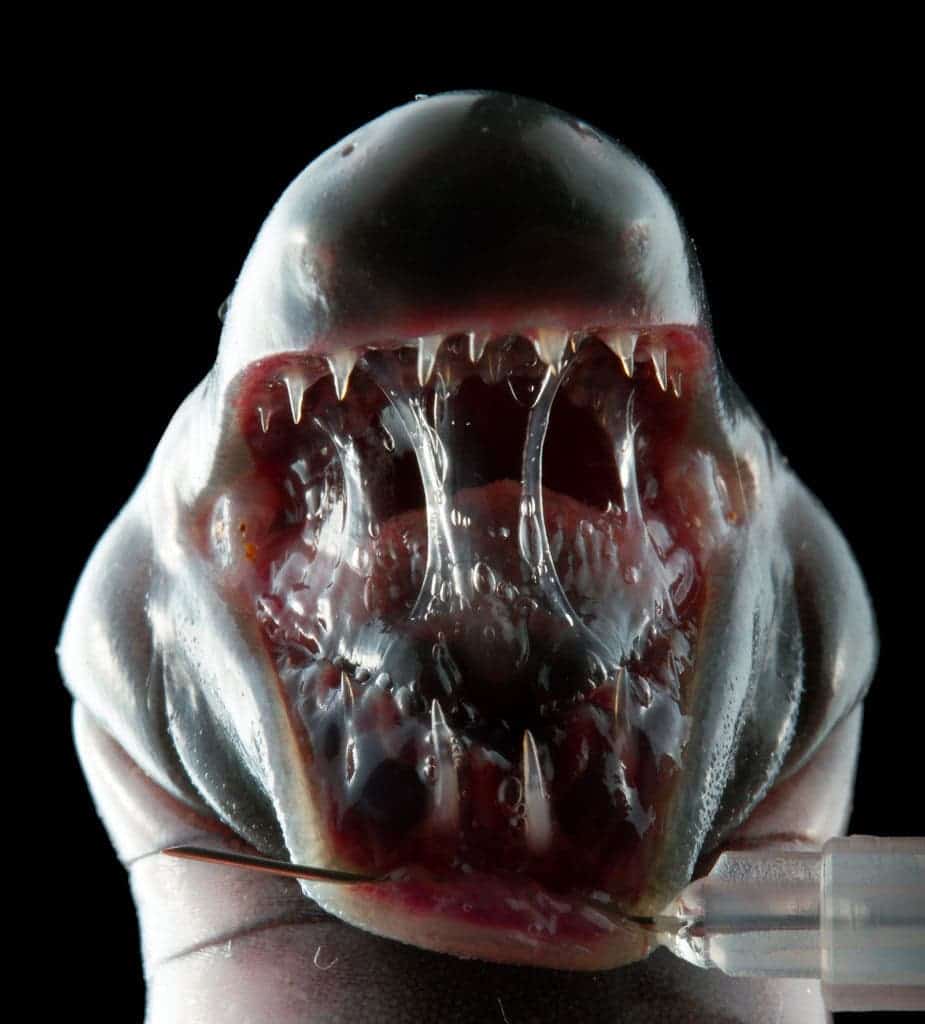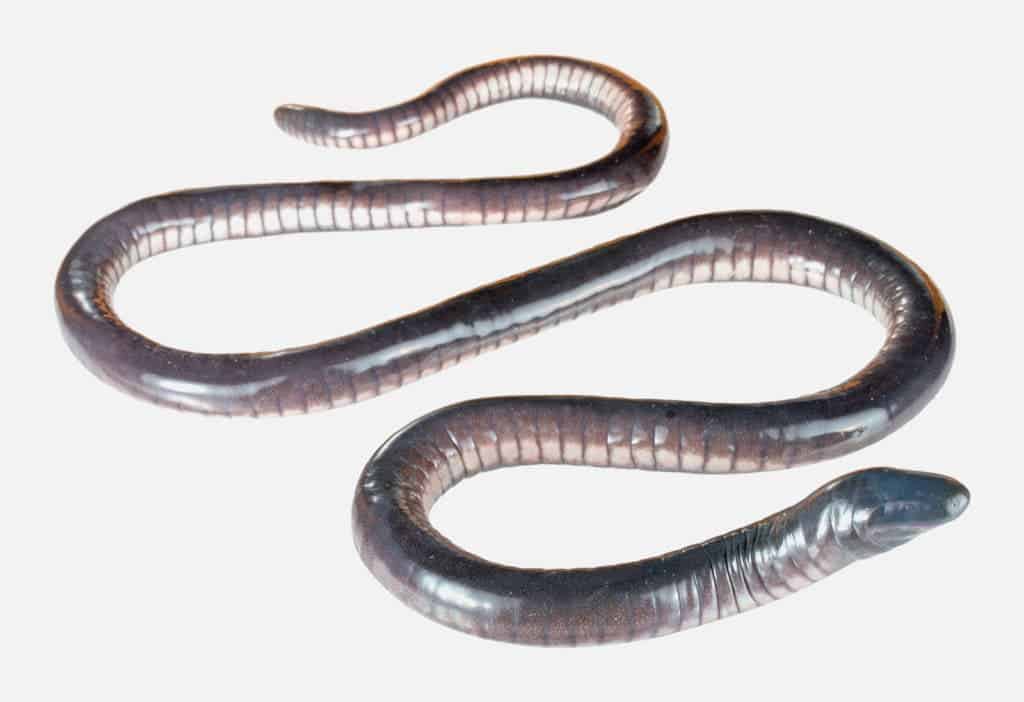Sure it looks creepy beyond all definition, but don’t worry: you’ll probably never see one in your life.

The creature in case is a a Giant Caecilian (Caecilia pachynema): a small, legless, earthworm-like amphibian (look closely and see the syringe needle for scale). Caecilians lack limbs, but they aren’t closely related to snakes — instead, they’re more related to frogs, toads, and salamanders. The menacing teeth are adapted to capture earthworms, their favorite meal. Here’s a full-body image of the same creature:

But the reason why you shouldn’t be afraid of these creatures is that you’ll likely never meet one. Caecilians tend to live hidden in the ground and in stream substrates, making them the least familiar order of amphibians. In fact, the name caecilian derives from the Latin word caecus, meaning “blind” — referring to the small or sometimes nonexistent eyes.
Because they rarely show up in the fossil record, we don’t know that much about their evolution — and because they live underground, much about their behavior is also unknown. This particular species (Caecilia pachynema) is found found in Colombia and Ecuador, around moist montane forests and rivers.
In January 2019, a team of biologists of Tropical Herping, and park rangers of Fundación Jocotoco joined forces to explore a remote and nearly intact stretch of cloud forest in the province of El Oro, Ecuador. In this forest, the only remaining one in the area at an elevation of 1800–2200 m, the team started to walk along a stream during a downpour. Amanda Quezada, a biologist of Universidad del Azuay, was the first to see the creature.
“I saw it moving slowly in the water along the stream. I was not afraid, but actually ecstatic, because I knew how rare these animals are. I got the impression that they are not aggressive, but they are extremely slippery (like a soap), making them almost impossible to catch”.
However, its pristine habitat is under threat by habitat loss — especially deforestation. So if anything, this creature should fear us and not the other way around. Currently, the Jocotoco Foundation has joined forces with Rainforest Trust to seek support to protect this patch of cloud forest, allowing this creature to live in peace for many years to come.


